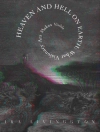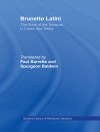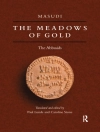This study brings new methodologies of literary geography to bear upon the unique contents of a codex known as British Library MS Harley 2253. The Harley manuscript was produced upon England’s Welsh March, by a scribe whose generation died in the Black Death. It contains a diverse set of writings: love-lyrics and devotional literature, political songs and fabliaux, saints’ lives, courtesy texts, bible stories and travelogues. These works alternate between languages (Middle English, Anglo-Norman and Latin) but operate in conversation with one another. The introduction explores how this fragmentary miscellany keeps being sutured into ’whole’-ness by commentary upon it. Individual chapters examine different genres and social groupings and demonstrate that there are many Harley landscapes still waiting to be discovered. It will be of great value to those studying literary history, medieval studies, cultural geography, gender studies, Jewish studies and book history.
Innehållsförteckning
Introduction: Harley manuscript geographies
1 Harley lyrics and Hereford clerics: the implications of mobility
2 Captives among us: Harley 2253 and the Jews of medieval Hereford
3 Histoire imparfaite: the counterfactual lessons of Gilote et Johane
4 Dying with Harley 2253: last lyric things
Epilogue: ye goon to…Hereford? Regional devotion and England’s other St Thomas
Appendix: Harley Manuscript contents
Index
Om författaren
Dr Anke Bernau is Lecturer in Medieval Literature and Culture at the University of Manchester












